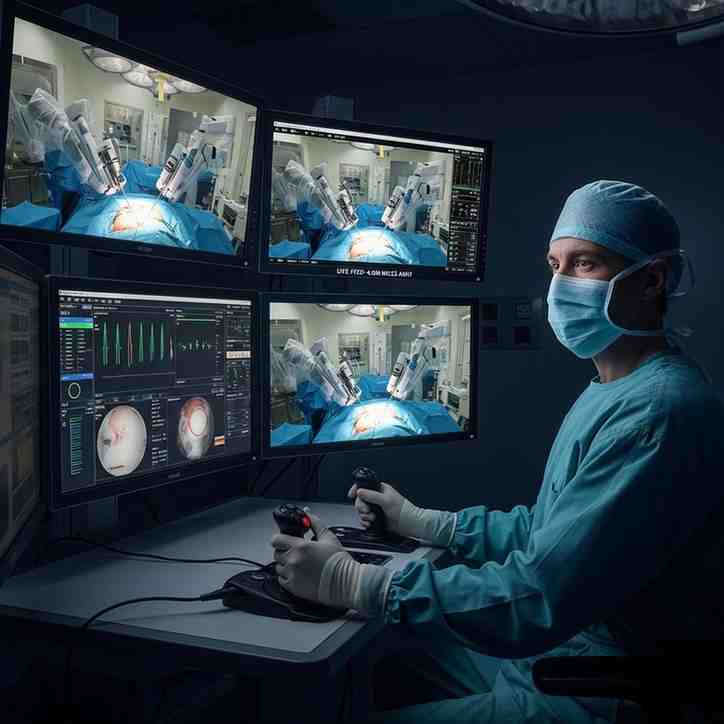
- In a groundbreaking advancement for medical science, surgeons have performed the world’s first transatlantic remote surgery , successfully linking Scotland and the United States using next-generation robotic and network technologies. The operation, which marks a historic step in stroke care and telemedicine , demonstrates how critical life-saving procedures can soon be performed across continents in real time.
A Medical and Technological Breakthrough
- The procedure involved a remote robotic thrombectomy —a minimally invasive surgery used to remove blood clots in stroke patients. It was conducted between the University of Dundee in Scotland and Jacksonville, Florida (US) . Professor Iris Grunwald , an interventional neuroradiologist at Dundee, remotely operated on a human cadaver 4,000 miles away, followed by Dr. Ricardo Hanel performing the reverse procedure from Florida. This dual experiment represents the first-ever transatlantic robotic operation in medical history.
Cutting-Edge Technology and Connectivity
- The operation used robotic systems designed by Lithuanian firm Sentante , powered by Nvidia’s AI computing technology and Ericsson’s high-speed network infrastructure . The connection achieved an astonishing 120-millisecond latency —virtually instantaneous across the Atlantic. Surgeons controlled the robot’s micro-movements, viewing live X-rays and navigating catheters with precision, while on-site staff handled the setup. Remarkably, operators required only 20 minutes of training to use the system effectively.
Transforming Global Stroke Care
- This innovation could revolutionise emergency stroke treatment , especially in remote or underserved regions. Experts estimate that every six-minute delay in clot removal reduces a patient’s chance of recovery by 1% , underscoring the life-saving potential of instant, remote surgical access.
Exam Pointers
-
First transatlantic remote surgery: Scotland–US (4,000 miles).
-
Surgeons: Prof. Iris Grunwald and Dr. Ricardo Hanel.
-
Developed by: Sentante; supported by Nvidia and Ericsson.
-
Latency: 120 milliseconds.
-
Procedure: Robotic thrombectomy for stroke.
Future Outlook
The University of Dundee , a leading global training hub for stroke intervention, plans to launch clinical trials in 2026 . The success of this experiment signals the dawn of a new era in remote robotic healthcare , where world-class treatment could reach any patient, anywhere, in real time.
Month: Current Affairs - November 12, 2025
Category: Science & Technology